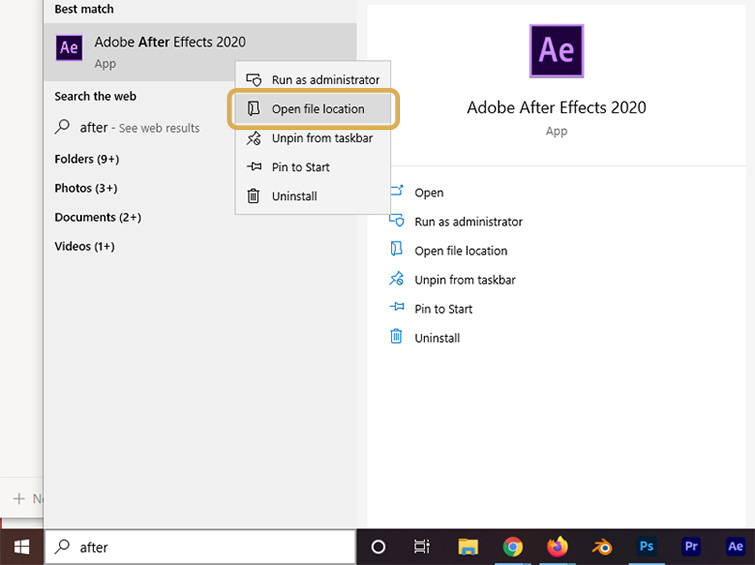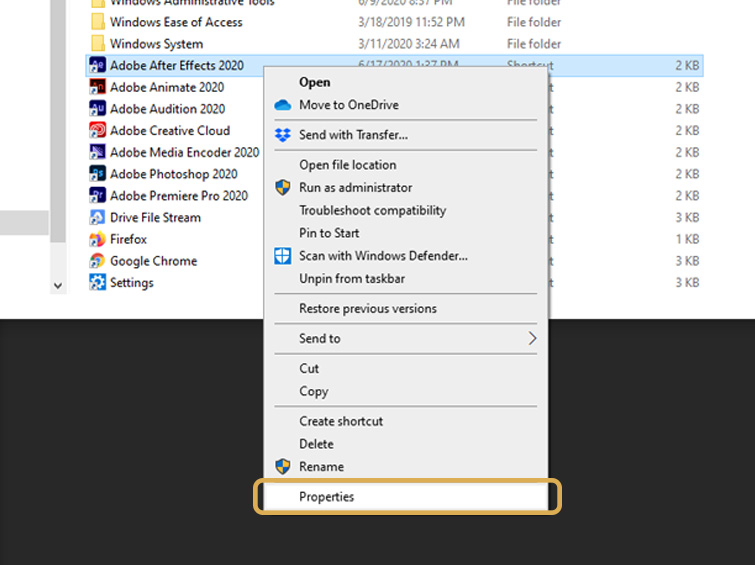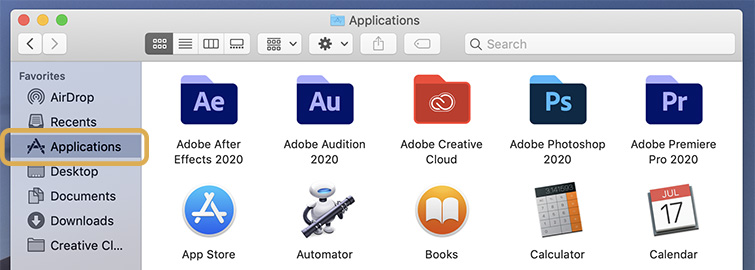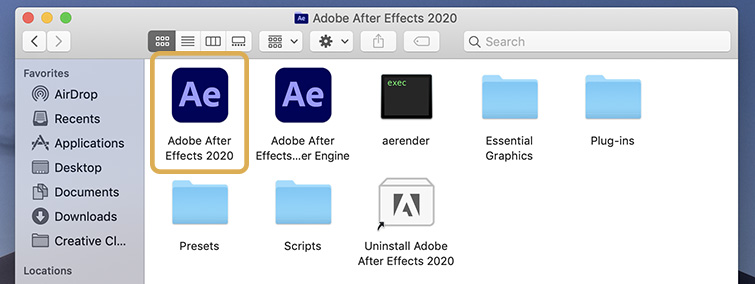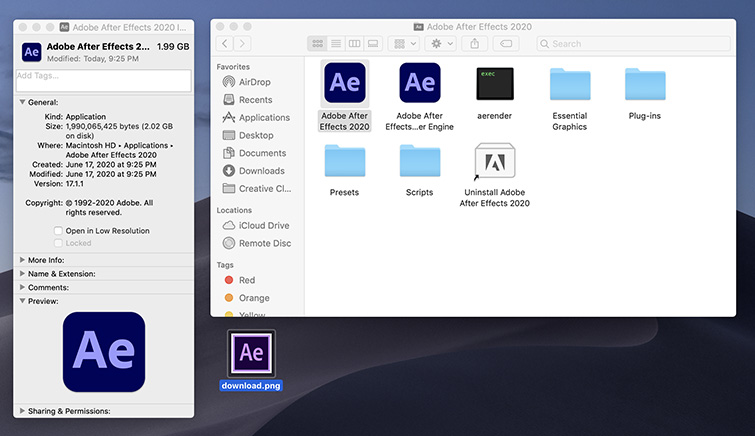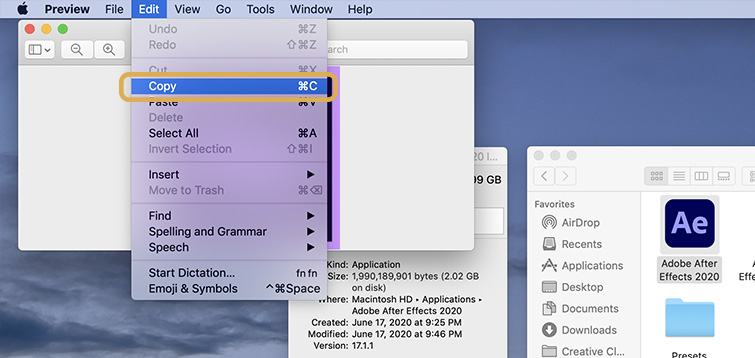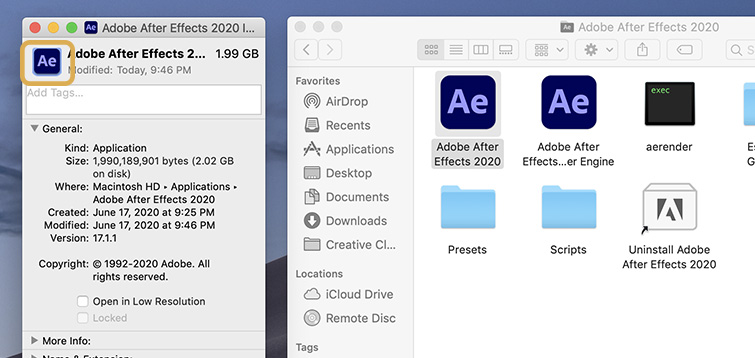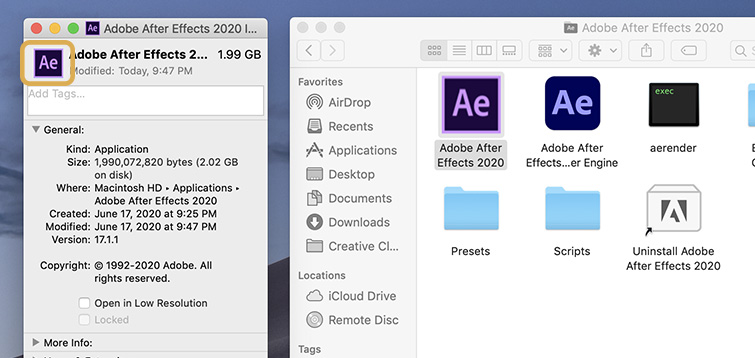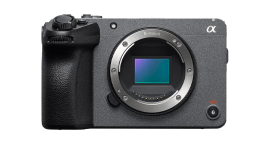How to Customize App Icons (and Get Your Classic Adobe Icons Back)
Add custom icons to your PC or Mac (and change your Adobe apps back to their classic looks so you can tell them apart).
I recently shared my thoughts on The Great Creative Cloud Icon Fiasco of 2020. (Spoiler alert: I hate the changes Adobe made to its app branding.)
After some self-reflection, I’ve decided it’s time to (mostly) leave my outrage behind and offer a solution. (I mean, the only other option was to just keep staring in disbelief at the new hard-to-tell-apart icons while blowing every deadline on my calendar.)
So, now I’m going to show you how to change the look of app icons on both PC and Mac. Obviously, I’ll be using this walk-through as an opportunity to change my Adobe icons back to their classic versions, but this technique is good for anyone who simply wants a customized experience. As you can see in the example below, where I turned the After Effects icon into a smiley face, you can use just about any image you like.
Changing App Icons on a PC
I’m using a PC as my primary machine these days, so we’ll start here. Then, I’ll hop onto my old Mac to show you that process down below.
Fun fact: While I’m not as upset with Adobe as I was when they rolled out the new icons, it is admittedly frustrating to know that I can’t even use Adobe Photoshop to create the ICO files my PC needs to perform this change. No worries, we’ve got some options.
There a few plugins we could install to handle this task, but I’m just going to use an online image converter. Today, I’ll use favicon.io since it’s super easy, but, really, any ICO converter you find online should do the trick. Now, let’s do this.
1. Convert Your Image File into ICO Format
I have a .png image of the old After Effects logo. I’m just going to upload it to favicon.io and then download the ICO zip file. See the image above? That’s what you should see after extracting the zip file in your Downloads folder.
2. Search for the App You’re Changing
In the Search bar, type the name of the app. In this case, we’ll start with After Effects. Right-click on the app, and select Open file location.
3. Change Properties
Now, in the file browser, right-click on the app, then select Properties.
4. Change Icon…
In the Properties menu, you’ll find a Shortcut tab with a Change Icon… button. Click the button. Then, hit the Browse… button, and navigate to the favicon folder in your downloads (or wherever you saved them). Select the ICO file you want to use.
Hit Open, then click OK. Click Apply. If you’re prompted to run as administrator, you can hit Continue, then click OK.
That’s it. If for some reason it doesn’t show up immediately, just unpin the current Ae shortcut on the taskbar, then pin it back to the taskbar. The change should take effect.
Changing App Icons on a Mac
This process is actually a little bit easier, and you won’t need an ICO file. You can use just about any image file — like .jpg or .png.
1. Search for the App in the Applications Folder
Open the Finder and navigate to the Applications folder. Search for the app — in this case, we’ll stick with After Effects. Open the Adobe After Effects 2020 folder.
2. Open the Properties
Click once on the Adobe After Effects 2020 icon to highlight, then on the keyboard hit Command+i.
This will open the inspector Finder and show the properties.
3. Open the Image Icon
As you can see above, I just have a .png copy of the old logo on my desktop. Double-click the image to open it in a Preview window.
In the main navigation of the Preview window, click Edit and select Copy.
4. Paste the Image Icon
Now, navigate back to the Finder with the Ae properties. Single-click on the small icon in the top left of the window.
With the icon highlighted, hit Command+v to paste the image.
You icon is now updated. If it doesn’t appear automatically in the Dock, just remove the app from your Dock, then add it back to apply the updated icon.
And now, the healing can begin. If you’re interested in exploring a few more Adobe-related tricks, techniques, and hot takes, check out the content below:




